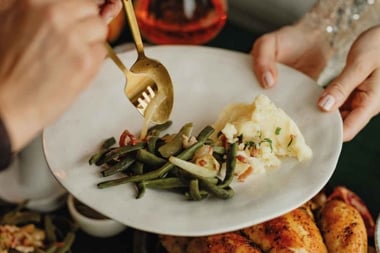Toxic Tampons

And safe alternatives that won't cramp your style. The average North American woman will, in her lifetime, use more than 11,000 tampons or pads.
The average North American woman will, in her lifetime, use more than 11,000 tampons or pads. And more than 20 billion disposable feminine hygiene products are flushed or tossed annually even more than babies' diapers.
Think for a second about how much garbage and money that represents. The picture turns darker again when you take into account the bleaching agents, additives and synthetic materials used to make many of these products, which are harmful to both your body and your planet.
Reports conflict about just how dangerous these additives are. But there is enough debate going on out there that all women should sit up, take note and inform themselves and realize, too, that there are alternatives to the products heavily advertised by large companies. Whether it be a washable pad, an all-cotton organic tampon, a reusable menstrual cup or something else, make sure you think before you buy.
Ads for women's sanitary products inevitably show sleek, active, airbrushed models, determined to hide their periods and eager to dispose of the evidence. The goods they're selling are equally shiny and processed. But at what cost?
Too often women associate whiteness for purity and, therefore, desirability. What we may not realize is that the very bleaching process that makes those tampons so white and clean-looking could also be making them dangerous. According to many reports, tampons can contain two things that are raising safety issues: rayon and dioxin.
Hidden Dangers
Feminine hygiene companies are required by both the Ministry of Health and Welfare and the Food and Drug Administration to bleach the raw material, which removes the lignans and waxes from the cotton as well as pathogenic bacteria. Unfortunately, many manufacturers use a chlorine-bleaching process with chlorine dioxide, elemental chlorine-free (which isn't free of chlorine as the name might suggest, but really means that it's not a chlorine gas process) or hypochlorite bleaches. These processes create toxic byproducts most notably, dioxins. Dioxins are carcinogenic, toxic to the immune and reproductive systems, and have been implicated in endometriosis and hormone disruption in cases of repeated use.
And if tampons, used several days a month every month for 40 years, don't provide the perfect example of repeated use, what does? There is no safe level of dioxin exposure. Today, we are bombarded by chemical dioxins from all sides in the food we eat and in the products we use every day, including paper towels, writing paper and toilet paper. They linger in the body and accumulate in fatty tissues.
Dioxins are also an environmental hazard. Given that the chemicals are cumulative and slow to disintegrate, they pose a real danger to ecosystems and wildlife.
Insecticides and pesticides used on conventional cotton crops are also a massive source of dioxin poisoning. Only organic cotton is safe for the environment, the women using the tampons and the farmers growing the cotton. More that 35 conventional cotton farmers, including young children working in the fields in India and Africa, died last season from pesticide poisoning.
Rayon is another tampon danger. Derived from wood pulp, it is also commonly chlorine-bleached and therefore may contain dioxins. Tiny fibres are often left behind in the vagina, causing, at the very least, irritation, and possibly more. Because rayon is so absorbent, women may leave tampons in longer than they ideally should, opening the door for bacterial growth and toxic shock syndrome.
A general rule of thumb for all women with regards to minimizing the risk of toxic shock syndrome: Alternate the use of tampons and sanitary pads. If you use tampons during the day, use pads at night, or vice versa.
American Action
On Nov. 11, 1997, US congresswoman Carolyn B. Maloney introduced the Tampon Safety and Research Act. She intended to protect consumers by finally giving them accurate information about tampon use.
"Why is this issue important? Because tampons and other related products often contain additives, synthetic fibres and dioxin," she said at the time. "My bill is specifically concerned with the possible links between dioxin in tampons and ovarian, cervical and breast cancers, as well as other potential hazards. What makes these toxic residues in tampons even more disturbing is that they come in direct contact with some of the most absorbent tissue in a woman's body."
Implicit in her statement to Congress was that she didn't feel enough information was getting into the hands of the general public. It isn't clear if Maloney's bill has changed the purchasing habits of American women. At the very least, she took steps to get consumers thinking and hold companies more accountable.
Pads and sanitary napkins aren't as obviously dangerous to women because they are not in direct contact with the sensitive tissue of the vagina. But they are still close. And they are definitely an environmental hazard because they're over-packaged and over-processed. It's time to check out your options.
A Woman's Choice
At the very least, consider turning to all-cotton, hypo-allergenic, perfume-free, non-chlorine bleached tampons and pads, available in health food stores. Panty-liners containing wood pulp bleached with hydrogen peroxide (which has no negative impact on human health or the environment) are also available, as are organic product lines. Every one of these is a step in the right direction.
Reusable, washable pads are also available in a variety of sizes and patterns. It will take a change in attitude for some of us to wash away our blood we seem to hate to get our hands dirty, sometimes, don't we? but a little investment of time will save money and garbage. Caring for the soft, breathable pads is not as much work as you may fear.
Wash your pads before the first use to increase absorbency. After use, separate the two parts, soak in cool water (this step reduces, even eliminates, staining), and rinse. Throw them in the wash and air or machine dry.
Why not buy three or four and try them out? Even using reusable pads while at home or at night will make a difference to the environment and your body.
Another popular option is the menstrual cup, which is made of soft rubber. These cups may seem expensive for a one-time outlay of cash (they cost around $50), but one cup will do you for at least 10 years at a time.
Worn internally for six to 12 hours at a time, inserting and removing the cup takes some getting used to. After a cycle or two, though, the cup could become your best friend: perfect for any activity, including long camping trips and travelling. There's no waste and no mess.
After switching to more natural feminine hygiene products, many women report diminished cramps, less premenstrual symptoms and even fewer yeast infections.
There is a lot of hype and fear mongering about various feminine hygiene products, especially on the Internet. One of the most widely spread hoaxes was about asbestos in big-name tampons ostensibly added to increase bleeding. That rumour turned out to be untrue but is still worth examining. Take all you read with a grain of salt, and check out your sources. Visit your health food store and ask about the latest products. It might be time to give something new a whirl. Your body, and the planet, will thank you for it.




